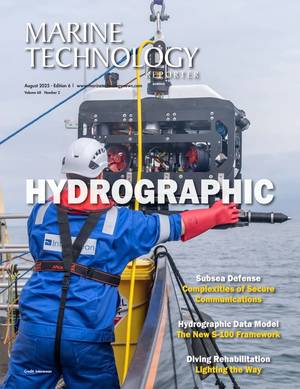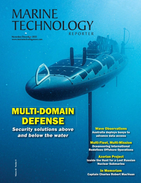Marine Technology News Search
Search term • "advanced navigation"
Create an email alert for "advanced navigation"
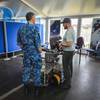
Blueye Robotics to Deliver ROVs to the Netherlands Royal Navy
Blueye Robotics, together with local partner RVI Tools, has secured a major international contract to supply underwater remotely operated vehicles (ROVs) to the Netherlands Royal Navy.The ROV systems will be delivered with advanced capabilities tailored for military engineers and mine countermeasure (MCM) teams.The awarded contract highlights the increasing demand for compact, user-friendly underwater systems to support complex military operations in inshore and coastal environments.

Kongsberg Discovery Announces Passive Acoustic Technology
Kongsberg Discovery is targeting a global roll out of advanced passive acoustic technology, helping markets such as the oil, gas and naval sectors detect operational anomalies from the outset, safeguarding critical subsea assets and environments. The push comes with the full integration of Naxys Technologies into the company, following on from its acquisition in January this year.Naxys has forged a position as Norway’s leading innovator in passive acoustics…
GPS-aided Inertial Navigation System on a Chip
VectorNav Technologies launch the VN-200, high-accuracy GPS-Aided Inertial Navigation System (GPS/INS) on a surface-mount chip the size of a postage stamp. Combining an advanced GPS module with the latest in MEMS inertial and pressure sensor technology, the patent-pending VN-200 provides a coupled position, velocity and attitude solution that is robust to a wide range of static and dynamic operating conditions.

Sonardyne Receives Queen’s Award for 6G
Sonardyne International Ltd. has been formally presented with the Queen’s Award for Enterprise by the Lord-Lieutenant of Hampshire. Dame Mary Fagan presented the Award in the Innovation category for Sonardyne’s Sixth Generation (6G) product platform during a visit to the company’s head office and manufacturing facilities in Yateley, Hampshire. As part of her visit, the Lord-Lieutenant was given a tour of Sonardyne’s campus…
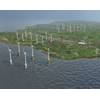
Ricardo to Support Kongsberg WFMS Development
Ricardo and Kongsberg have signed a framework agreement that will see Ricardo support the development of the Kongsberg Wind Farm Management System (WFMS) as well as related condition monitoring systems for a range of other industrial sectors. The Kongsberg WFMS is a turbine independent decision support system. It surpasses the functionality found in wind farm supervisory control and data acquisition systems…
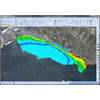
CTI SonarWiz
Chesapeake Technology announced an advance to its flagship software SonarWiz processing with the addition of a Real-Time Acquisition Server for the EdgeTech 4600 and recently-introduced EdgeTech 6205 interferometric bathymetry systems. The EdgeTech bathymetry systems are unique in the industry offering advanced wide swath bathymetry with no nadir gap and true co-registered dual frequency side scan sonar.
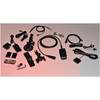
KEP Releases New HD Video Management Systems
Kessler-Ellis Products (KEP), a manufacturer of type approved displays, computers and peripherals, announced the release of its two new high definition video management systems, the HD-SDI (High Definition Serial Digital Interface) Professional and the HD Sport Cam. Able to record in high definition 1080p resolution at up to 60 frames per second, the new KEP cameras are IP68 waterproof rated– submersible to two meters for one hour.
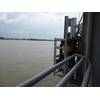
Sensors Track Gulf of Mexico's Nitrate Pulse
A new U.S. Geological Survey (USGS) report describes how advanced optical sensor technology is being used in the Mississippi River basin to accurately track the nitrate pulse to the Gulf of Mexico. Excessive springtime nitrate runoff from agricultural land and other sources in the Mississippi drainage flows into the Mississippi River and downstream to the Gulf of Mexico. This excess nitrate contributes to the Gulf of Mexico hypoxic zone…
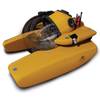
Rayotek: Seeing Under Pressure
According to Bill Raggio, Rayotek Scientific isn’t specifically a maritime company, but it definitely is part of San Diego’s “Blue Economy.” “We’re both an engineering company and a sapphire and glass manufacturer. We makes specialized glass for windows and sight windows, diffusers, pressure vessels, hydraulics and boiler systems, submarine periscopes and camera covers,” says Raggio, Rayotek’s chief technology officer.

IHO Director to Give CARIS Keynote Speech
Developers of geospatial software CARIS inform that Gilles Bessero, Director of International Hydrographic Organization (IHO), will deliver the closing keynote address at the CARIS 2014 conference June 2-5, 2014 in Brest, France. Gilles Bessero, is Director at the International Hydrographic Organization (IHO), the intergovernmental organization whose role is to ensure that the world’s seas, oceans…
Ultra-Deepwater Pipe Order Challenge for French Firm
France-based manufacturer of tubular pipes & fittings, Vallourec, informs it has been awarded a $100 million contract for the supply of premium pipes with VAM® 21 connections for the offshore ML-South Project, operated by Total’s affiliate Total E&P Borneo in Brunei. The development wells will be producing at depth greater than 5,000m, in a highly corrosive environment and sustaining High Pressure/ High Temperature (HP/HT).
Three NOAA scientists honored by White House
The White House yesterday awarded three NOAA scientists with Presidential Early Career Awards for Scientists and Engineers. The award is the highest honor given by the federal government to outstanding scientists and engineers in the early stages of their careers. Laboratory. The NOAA scientists are part of a group of 102 scientists from across federal agencies that received the prestigious award.
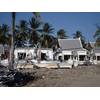
Europe’s Largest Tsunami Simulator Under Construction
UCL and HR Wallingford, the specialist hydraulic research and consultancy, are collaborating to construct the largest tsunami simulator in Europe, to better understand the impact of these devastating natural phenomena on buildings and coastal defenses. The facility, which is being funded by a €1.9 million European Research Council (ERC) Starting Grant “URBAN WAVES”, will be 70 m long and 4 m wide, enabling – for the first time – the simulation of a tsunami impact on urban areas…
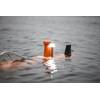
Kongsberg Makes Multiple Debuts in London at Oceanology 2014
Kongsberg Maritime announced at OI ‘14 that it will add the new MUNIN AUV to its subsea equipment rental pool in Aberdeen. Expected to be available for hire in October 2014, the MUNIN AUV will further enhance the existing portfolio of Kongsberg Maritime Ltd rental equipment, which supports customers within the offshore oil and gas, environmental and renewable energy markets. The MUNIN AUV is designed to collect high resolution sonar data geo-referenced by a survey grade positioning system.
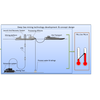
European Consortium Targets Sustainable Seabed Mining
The European Commission is helping to take seabed mining to the next level by funding a four-year project entitled: “Breakthrough Solutions for Mineral Extraction and Processing in Extreme Environments – Blue Mining”. The overall aims of this project are to develop new cost-effective solutions for environmentally friendly mining and processing in difficult conditions and extreme environments, and to further unlock the large potential of raw materials in Europe.
Olympus Debuts Portable Eddy Current Flaw Detectors
Olympus announced the introduction of its new NORTEC 600 Series high-performance eddy current flaw detectors. The NORTEC 600 incorporates the latest advancements in high-performance digital circuitry and eddy current flaw detection into one compact and durable unit. With its crisp and vivid 5.7 inch VGA display and true full-screen mode, the NORTEC 600 is capable of producing user-selectable, highly contrast eddy current signals in any lighting condition.

Kraken Robotics' 3Q Revenue on the Rise
Canadian marine robotics specialist Kraken Robotics saw its third quarter 2022 revenue grow to $12.3 million compared to $5.1 million in the prior year.The company said Tuesday that its revenue growth was driven by the continued delivery to the Royal Danish Navy on multiple minehunting systems, the addition of PanGeo services, and the delivery of our SeaPower battery products. Year-to-date revenue…

Tech File: Next-gen Acoustic Flooded Member Detection
Impact Subsea released a new generation of underwater, Flooded Member Detection system: ISFMD V3, designed to provide an intuitive yet simple-to-use flooded member detection system for deployment by divers or remotely operated vehicles.The system provides capability to test and store results for multiple members at a time. Multiple members can be preconfigured prior to commencing the survey with details of diameter, length and angle.
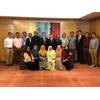
Geoscience Software Gift to University of Malaya
GeoSoftware, part of CGG’s Geoscience division, has donated twenty of its advanced geoscience software suites to the University of Malaya (UM) in Malaysia. The initiative will enrich the student experience at UM’s Department of Geology while supporting its mission to train world-class professionals for domestic or international careers in petroleum geosciences.The software will be used to teach quantitative…
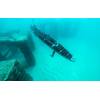
KAUST, Ocean Aero to Deploy Solar-powered AUSV in Red Sea
King Abdullah University of Science and Technology (KAUST) and Ocean Aero, a manufacturer and service provider of ocean-going Autonomous Underwater and Surface Vehicles (AUSVs) have started a collaboration which will see Ocean Aero's solar and battery-powered AUSV deployed in the Red Sea.Ocean Aero and Shelf Subsea, a service company for the marine industry, will bring the AUSVs into Saudi Arabia,…
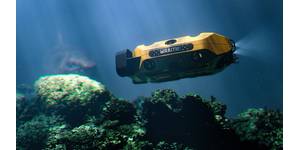
 August 2025
August 2025
